This post may contain affiliate links. Please read the disclosure policy to learn more.
Thank you for supporting this blog!
Featuring a soft, creamy center enrobed in chocolate and decorated with sprinkles, these buttercream Easter eggs are a classic Easter candy treat!
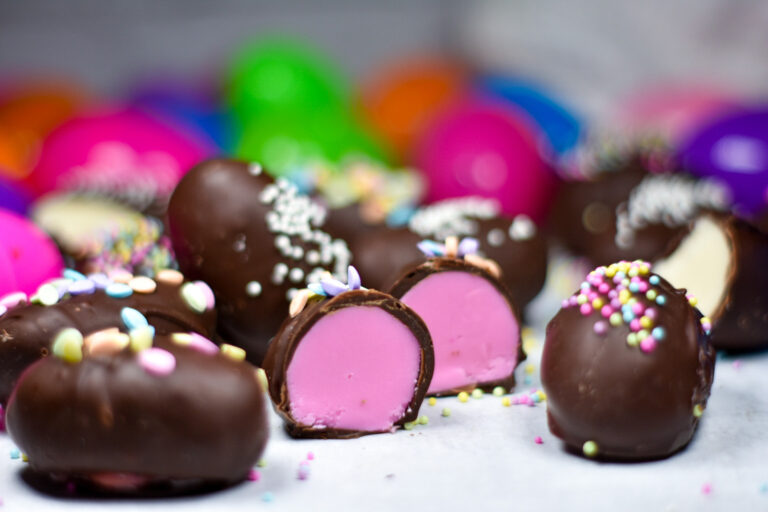
Why Make These Buttercream Easter Eggs?
Growing up, these chocolate-dipped buttercream Easter eggs were a family favorite. An annual holiday tradition, I looked forward to making them every year.
I have a photocopy of the tattered old cookbook from which this recipe originates. The recipe says WGAL-TV CONSUMER CORNER and is dated April 2, 1982, courtesy of The Kitchen Shoppe in Carlisle, PA. Also included are recipes for other classic Easter treats such as peanut butter eggs and chewy coconut eggs.
Of all of the buttercream Easter egg varieties, I always loved the maple walnut flavor best. (Probably because I love anything maple-flavored, as evidenced by my maple walnut ice cream recipe!) But it’s fun to make a variety of different flavors, ensuring that there is an Easter egg for everyone.
These sweet, creamy eggs feature a soft buttercream center enrobed in chocolate and decorated with sprinkles, sugar, or piped chocolate. They look complicated, but aside from tempering the chocolate (see my workaround below!) they’re actually very simple to make, with no actual cooking required.
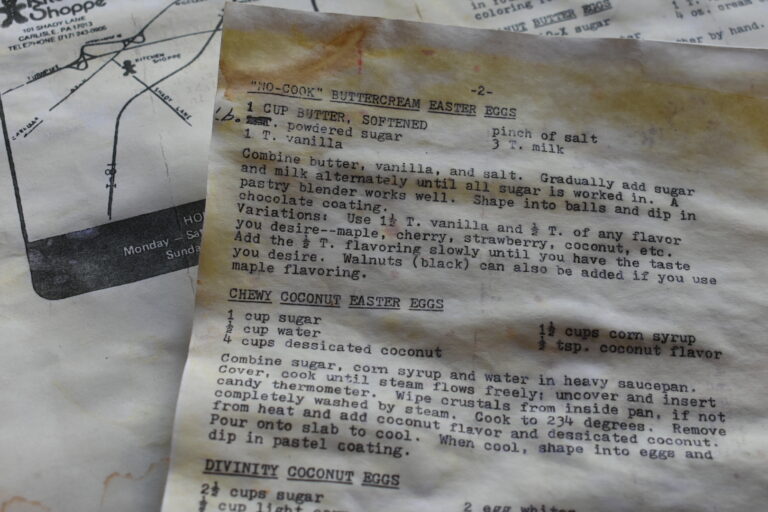
Buttercream Easter Egg Ingredients
To make these buttercream Easter eggs, you’ll need the following ingredients:
- Unsalted Butter – You’ll need 225 grams, or 1 cup of unsalted butter, softened.
- Vanilla Extract – Vanilla extract (or vanilla bean paste) creates the base flavor for the buttercream centers.
- Fine Sea Salt – A touch of fine sea salt (or kosher salt) balances out the sweetness of the confectioner’s sugar.
- Confectioner’s Sugar – A.k.a. icing sugar, powdered sugar, or 10x sugar. You’ll need about 900 grams, or 2 pounds, of sugar, plus more to adjust the consistency of the buttercream filling.
- Whole Milk – Or skimmed milk, or your favorite plant milk.
- Flavoring – Some of my favorites include coconut, strawberry, cherry, chocolate, maple walnut, lemon and vanilla bean, but you can make buttercream eggs in any flavor you’d like. For extracts and oils, LorAnn Oils is my go-to.
- Gel Food Coloring – For tinting the buttercream filling. I use Chefmaster brand gel food coloring.
- Chocolate – For enrobing the eggs. I recommend a good-quality couverture such as Valrhona or Callebaut, or a better store brand like Ghirardelli, Guittard, or Lindt. You can also melt pre-tempered coating wafers. Avoid chocolate chips.
- Sprinkles – Decorate your enrobed eggs with sprinkles (store-bought or homemade), sanding sugar, or other candies.
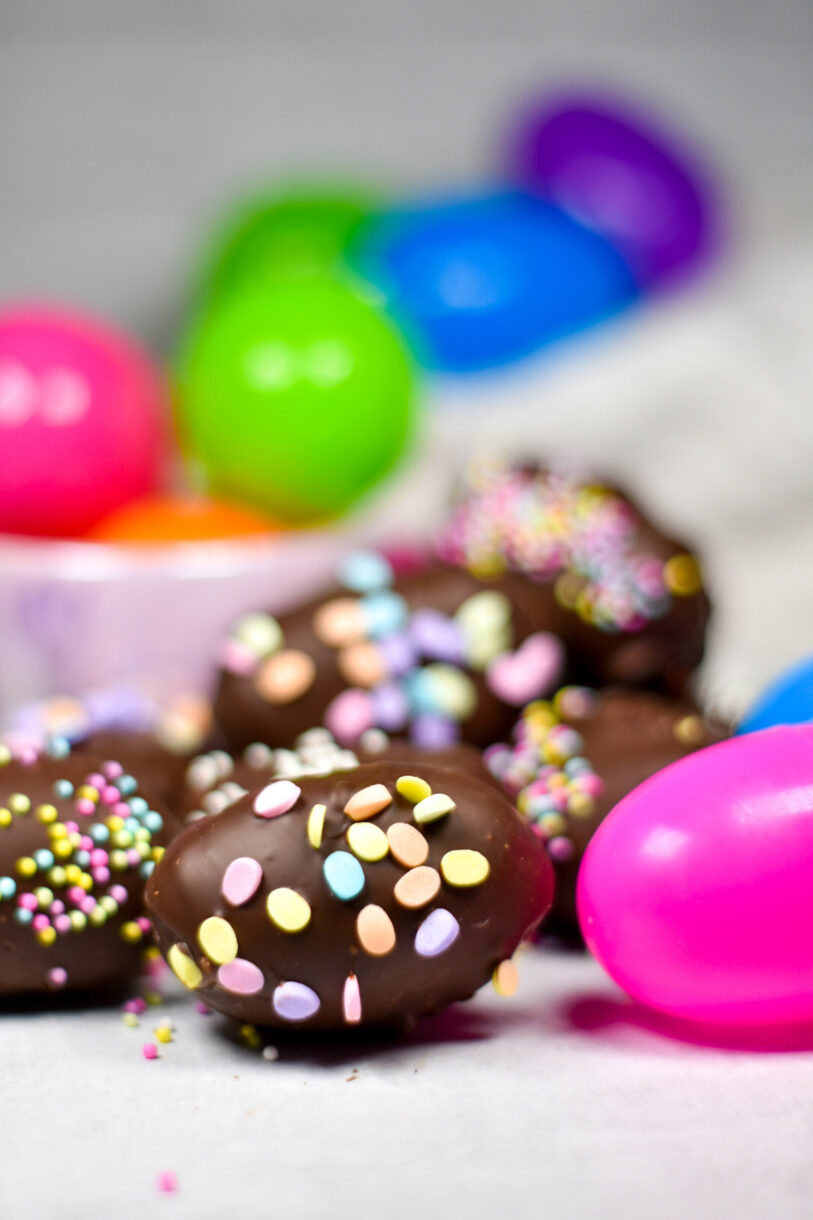
Which Chocolate Should I Use for Buttercream Eggs?
Tempering is the process of heating and cooling couverture to specific temperatures for chocolate that sets quickly, with a distinctive shine and snap. If you aren’t familiar with tempering, you can use discs of coating chocolate for this recipe. Unlike couverture, coating chocolate (also known by a range of other names such as melting chocolate, melting wafers, confectionery coating, candy wafers, or dipping chocolate) is pre-tempered and ready to go, right out of the package.
I enrobed my old fashioned buttercream candy in Callebaut 54.5% dark chocolate. However, you can use any chocolate you’d like—white, milk, or even ruby chocolate will work. Opt for a good-quality chocolate couverture. Do not use chocolate chips, which are better suited to baking than candymaking.
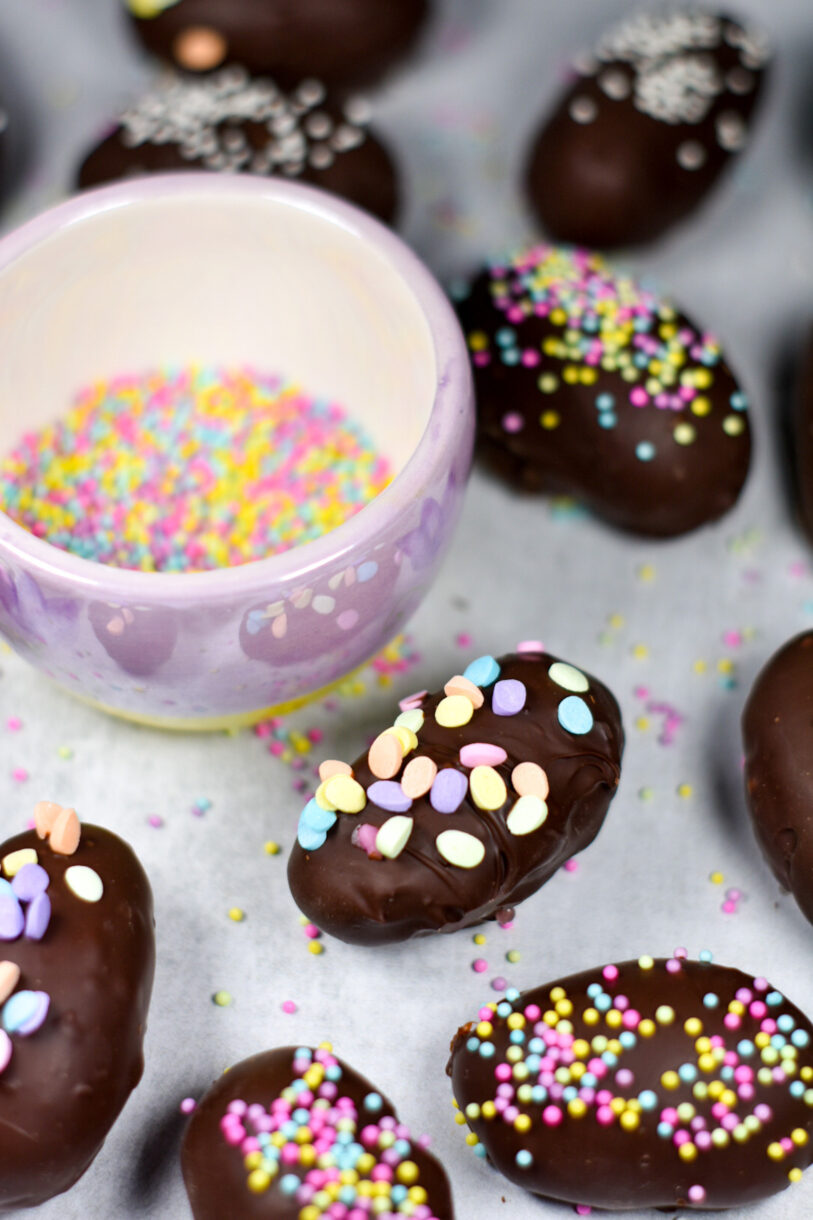
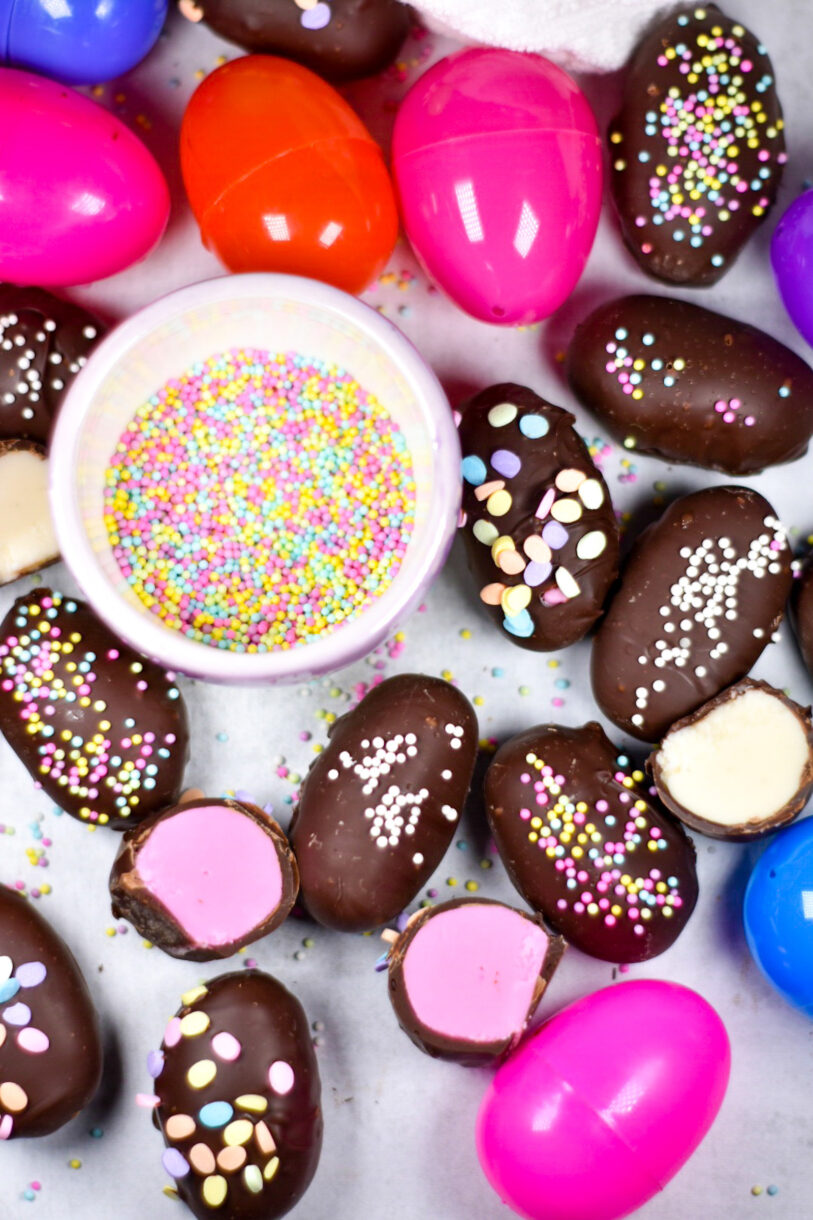
Buttercream Easter Egg Tips and Tricks
Get creative with flavors and colors. You can separate the buttercream dough into several smaller bowls and use a different flavor oil and gel food coloring for each, rather than making one big batch of the same flavor. I like to coordinate the flavors and colors, ie. pink for strawberry, white for coconut, or green for pistachio.
Buy high-quality flavorings. For most candy recipes, I use high-quality flavor oils from LorAnn Oils. If you don’t have these, grocery store flavor extracts will work, but you will need to use more product because extracts are less concentrated than super-strength extracts and oils.
Ideas for Flavoring, Coloring, and Decorating Chocolate Easter Eggs
Flavors. Some popular options include maple, cherry, strawberry, coconut, coffee, raspberry, chocolate, or peppermint. Add the flavoring slowly, a few drops at a time, and keep tasting as you go. You can also skip the flavoring and make classic vanilla buttercream eggs instead. (If opting for vanilla, I suggest adding a teaspoon of good-quality vanilla bean paste to the buttercream to accentuate the vanilla flavor, and add pretty speckles of vanilla bean for visual appeal.)
Colors. Use gel food coloring to tint the buttercream, choosing colors to match your flavors (pink for cherry, yellow for lemon, etc.) You can also retain the natural off-white color if making coconut or vanilla eggs, or if you prefer a more natural look.
Optional mix-ins. Try kneading other add-ins, such as chopped nuts, coconut flakes, or crushed espresso beans, into the buttercream dough.
Decoration. Sprinkle homemade butter cream eggs with pastel nonpareils, Easter sprinkles, sanding sugar, crushed nuts, or piped or drizzled chocolate. If making several kinds of buttercream, I choose a different decoration for each to help differentiate between flavors.
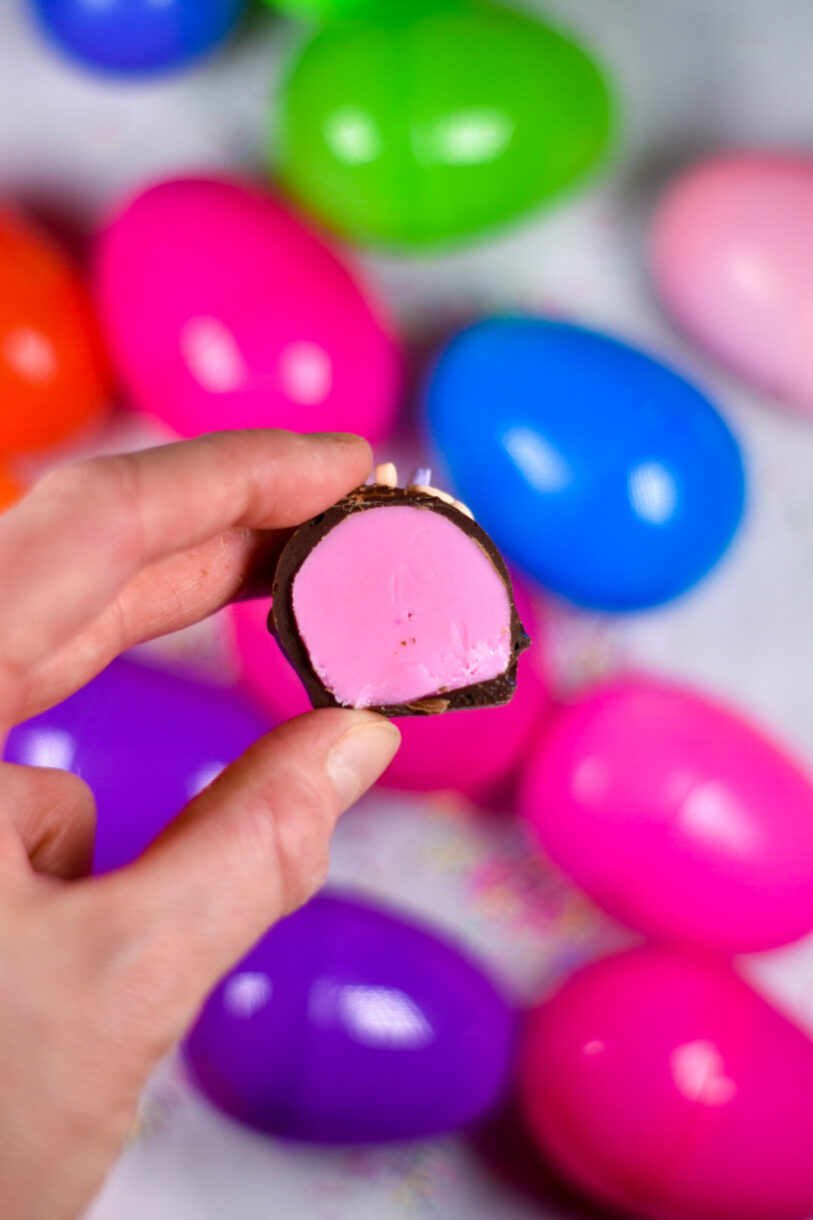
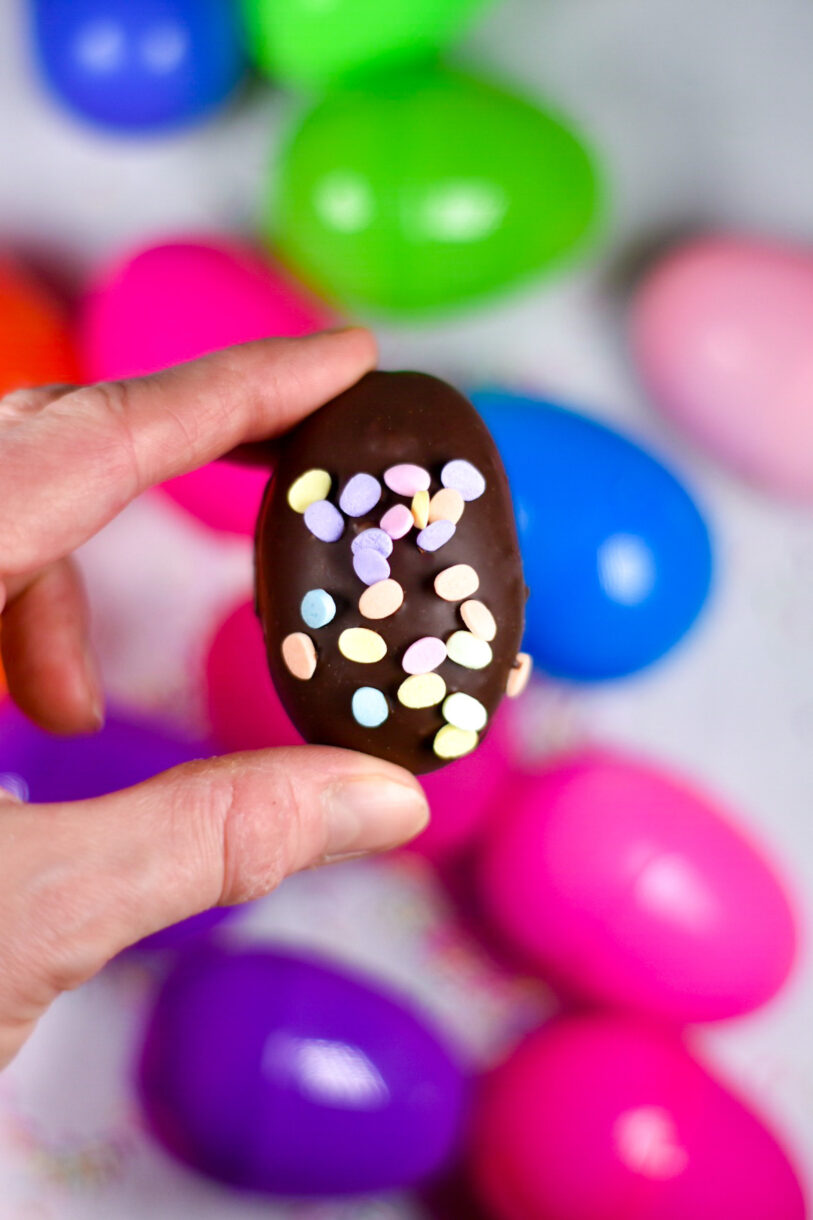
Make-Ahead and Storage Suggestions
Layer eggs between sheets of parchment or wax paper. Refrigerate or store or in a cool/dark place at room temperature, for up to two weeks.
More Easter recipes you might enjoy:
Chocolate Mini Egg Cookies
Creme Egg Brownie Cups
Mini Egg Blondies with White Chocolate Ganache
Pastel Cream Cheese Peppermints
Easter Candy Corn
And if you do make these, or any of my recipes, don’t forget to tag me @bastecutfold or use the hashtag #bastecutfold on Instagram. I always love to see what you’re making!
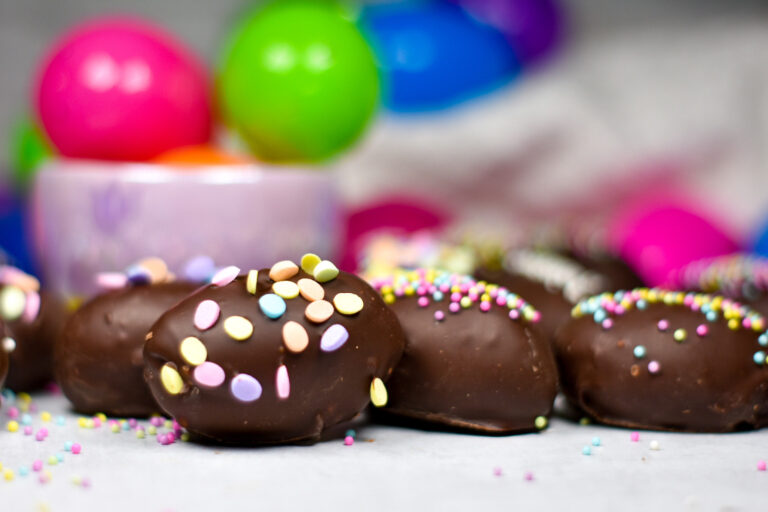
Buttercream Easter Eggs
Creamy Easter eggs featuring a soft buttercream center enrobed in chocolate and decorated with sprinkles.
- Prep Time: 1 hour
- Chilling Time: 15 minutes
- Total Time: 1 hour 15 minutes
- Yield: 50 2 in / 5 cm long eggs 1x
- Category: Chocolate
- Method: No Cook
- Cuisine: Sweets
Ingredients
225 grams unsalted butter, softened (1 cup / 2 sticks)
1 tablespoon vanilla extract
1/4 teaspoon fine sea salt
900 grams confectioner’s sugar (2 pounds, or about 7–7.5 cups), plus more to adjust consistency
45 milliliters whole milk (3 tablespoons), plus more to adjust consistency
Flavor oil, to taste
Gel food coloring (optional)
Dark or milk chocolate, for enrobing
Sprinkles or sanding sugar, to decorate
Instructions
Line a half sheet rimmed baking tray with parchment or a silicone mat. Set aside.
In a large mixing bowl or the bowl of a stand mixer, whip softened butter on high speed until light and fluffy.
Mix in vanilla extract and fine sea salt.
Gradually add confectioner’s sugar and milk, alternating between the two until a soft dough forms. If necessary, add a bit more sugar or milk to adjust the consistency. The dough should be soft enough to shape, but not overly sticky.
Add flavor oil and gel food coloring. (For different colors or flavors, separate the dough into several smaller bowls.)
With your hands, shape the dough into 1 – 1 1/2-inch balls. Arrange on prepared tray and refrigerate until ready to use.
Melt the chocolate. (See notes on tempering, above.)
Working quickly, use an enrobing fork to dip each center in the melted chocolate. Arrange on prepared tray.
Before chocolate sets, decorate each egg with Easter sprinkles, homemade sprinkles, or sanding sugar.
Allow chocolate to set at room temperature.
Layer eggs between sheets of parchment or wax paper. Refrigerate or store or in a cool/dark place at room temperature, for up to two weeks.
Notes
Recipe adapted from WGAL-TV Consumer Corner/The Kitchen Shoppe in Carlisle, PA. Original recipe dated April 2, 1982.
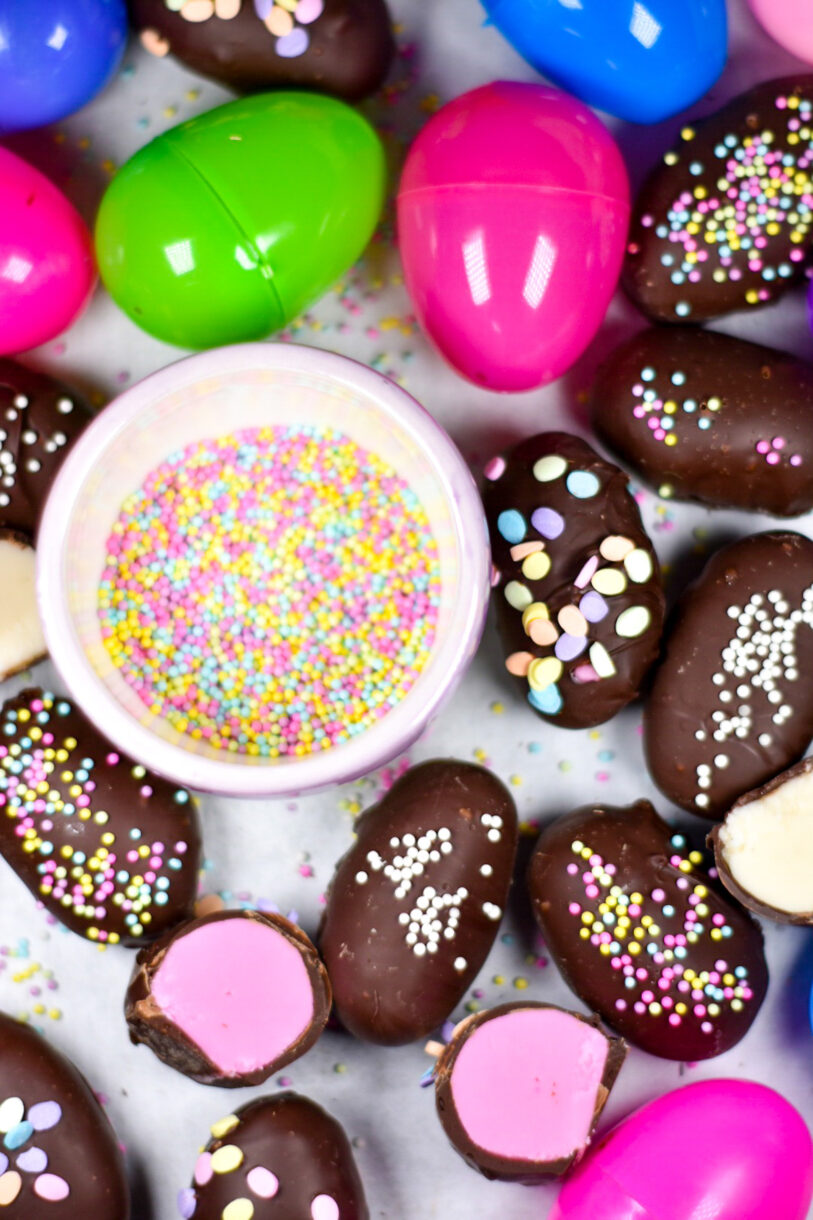
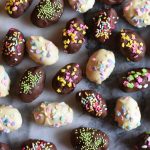




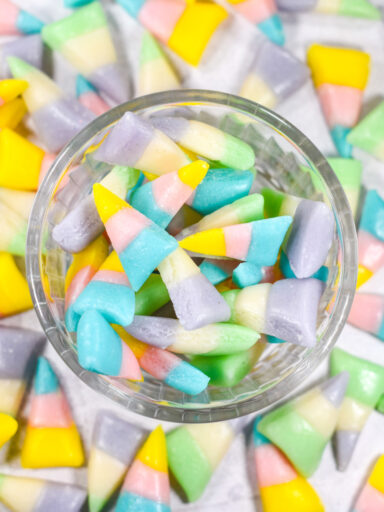
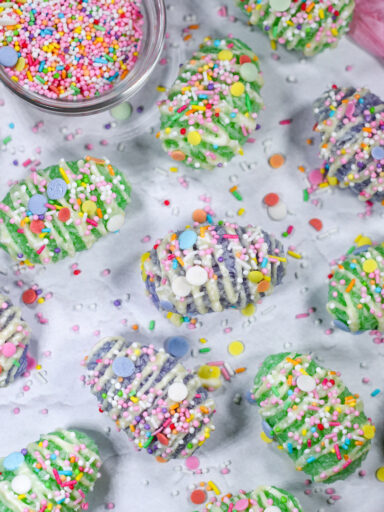
I loved the recipe!
Could I use real fruit puree instead of extracts or will it be runny and if so can I add more powered sugar to make it work?
Due to the high moisture content, I wouldn’t suggest using fruit purée in this recipe. For a more natural alternative, you could try using food-grade essential oils (such as orange or peppermint oil) instead of extracts. Or, you might be able to knead a bit of crushed freeze-dried fruit into your filling mixture. I haven’t tried it personally, but it should add a nice pop of color and a hint of fruit flavor!
How can I use this recipe to make peanut butter eggs
Hi Melanie! I’ve never tried to add peanut butter to this recipe. However, here is my go-to recipe for peanut butter eggs. You can also roll the mixture into ball shapes and serve at any time of the year!
Peanut Butter Eggs
8 oz. (225 g) butter, softened
8 oz. (225 g) cream cheese
2 teaspoons vanilla extract
1 1/2 cups (190 g) smooth peanut butter
32 oz. (908 g) confectioner’s sugar
Combine all ingredients using a hand or stand mixer. Roll into eggs and chill until firm. Dip chilled centers in tempered chocolate of choice (dark, white, and milk will all work well).
Enjoy!